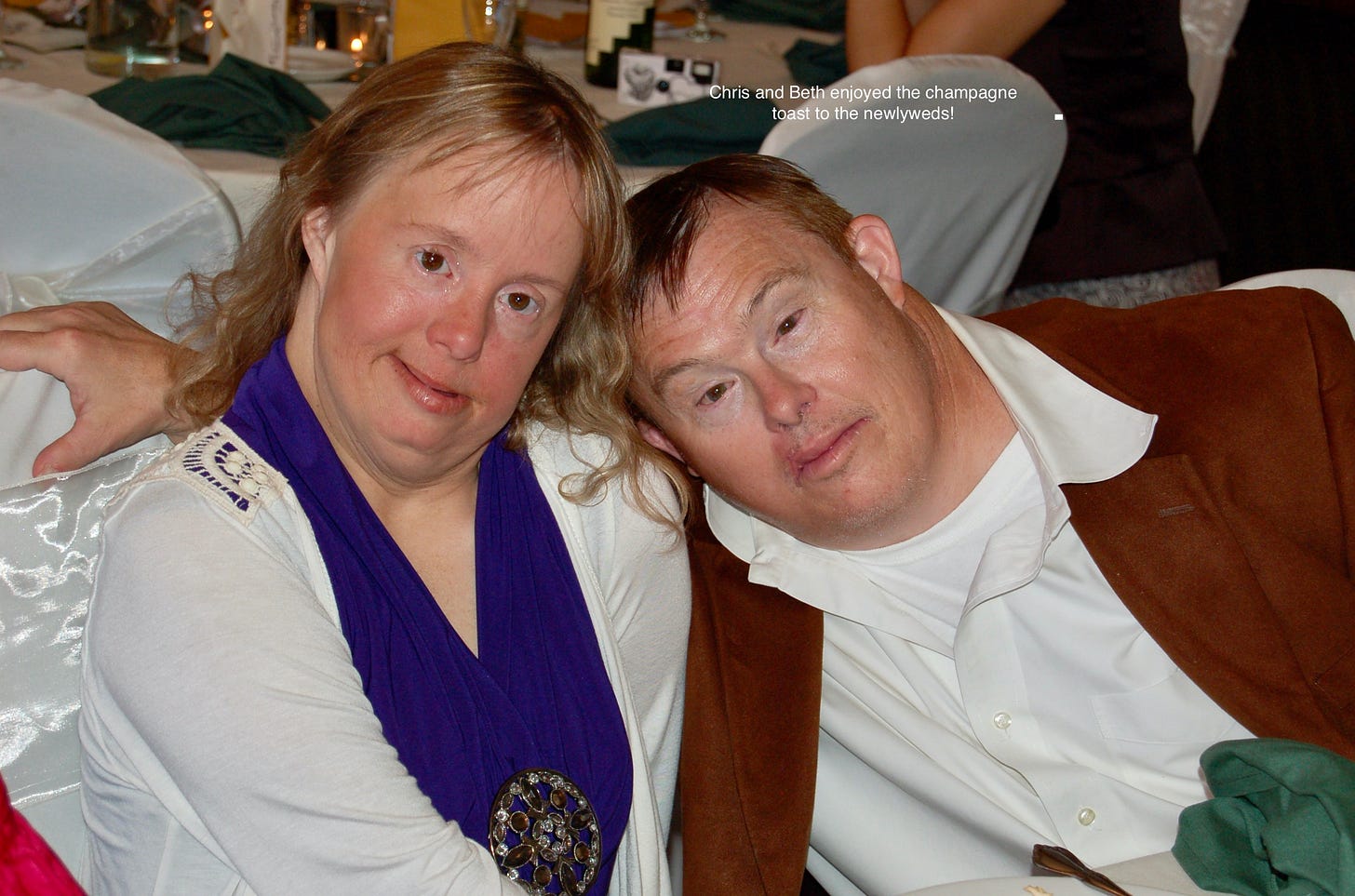The beginning
When Beth was born in 1965, the doctors told Mom and Dad that she was a “Mongolian idiot” with extremely limited potential, unlikely to become verbal or to have the ability to care for her personal needs. They recommended institutionalization, rather than the certain disruption that she would bring into our family life.
Although Mom and Dad, already in their 40’s, had not planned for, nor particularly wanted, a 5th child, they brought Beth home and did their best with the virtually non-existent support services available at the time.
It’s hard now to imagine what it was like prior to the enactment in 1975 of Public Law 94-142: Education for All Handicapped Children Act, when school districts could, and usually did, simply exclude students who had special educational needs. Kids with Down syndrome, cerebral palsy, autism, hearing or vision loss, seizures, brain injuries, intellectual disabilities, or mobility issues mostly stayed home. It was unusual to see people with obvious disabilities in public: not at school, not at church, not at the grocery store, not at the park. On the rare occasions that we encountered a “handicapped” person, it felt awkward; it was an unfamiliar situation and we weren’t sure how to respond.
I was 12 when Beth was born. Although I was initially unsettled by the idea of having a “retarded” sister, she was actually a cute, affectionate, and responsive baby. Even as a 7th grader, I quickly realized that there was a lot more possibility and potential here than the medical experts had predicted. She laughed easily and was deeply appreciative of the smallest pleasures. She was meeting developmental milestones, just at a different rate. Maybe she wouldn’t progress as quickly as a typically developing child. But maybe we just had no idea how much she could learn at her own pace, in her own style.
As it turned out, that was true.
Beth became a voracious reader, with a particular fondness for Stephen King. She had spunk and sass, and she benefited from attending the special education classes that became available to her. She was an excellent swimmer and traveled across the US to compete in Special Olympic events.
At home, she used public transit to get to her supported job as a weaver of textiles. She took pride in her work and in her increasing independence. As an adult, she moved into a group home and had a close circle of friends, as well as a charismatic and devoted true love and soulmate, who also had Down syndrome. She was a music lover and an inspired dancer, and she went to dozens of live concerts, including Fleetwood Mac, the Doobie Brothers, the Eagles, and the Rolling Stones.
Now Beth is 57, and she has dementia. She rarely speaks. She seems to regard me as a benevolent entity, but she no longer remembers my name, or our relationship. But she still responds to the music of the 1960’s to the 1990’s.
Beth was the beginning for me, opening me up to a world of different possibilities. I’ve been on this path ever since, and it’s never been boring.
For years, I have been sharing the hilarious, poignant, and surprising stories of life in the special education classroom (and beyond) with my colleagues, family, and friends. If I had a dollar for every time someone told me I should write a book, I could take my husband out for a nice dinner, with a glass of wine, dessert, and a good tip.
I’m starting to write that book, one story at a time. Please join me.
.





